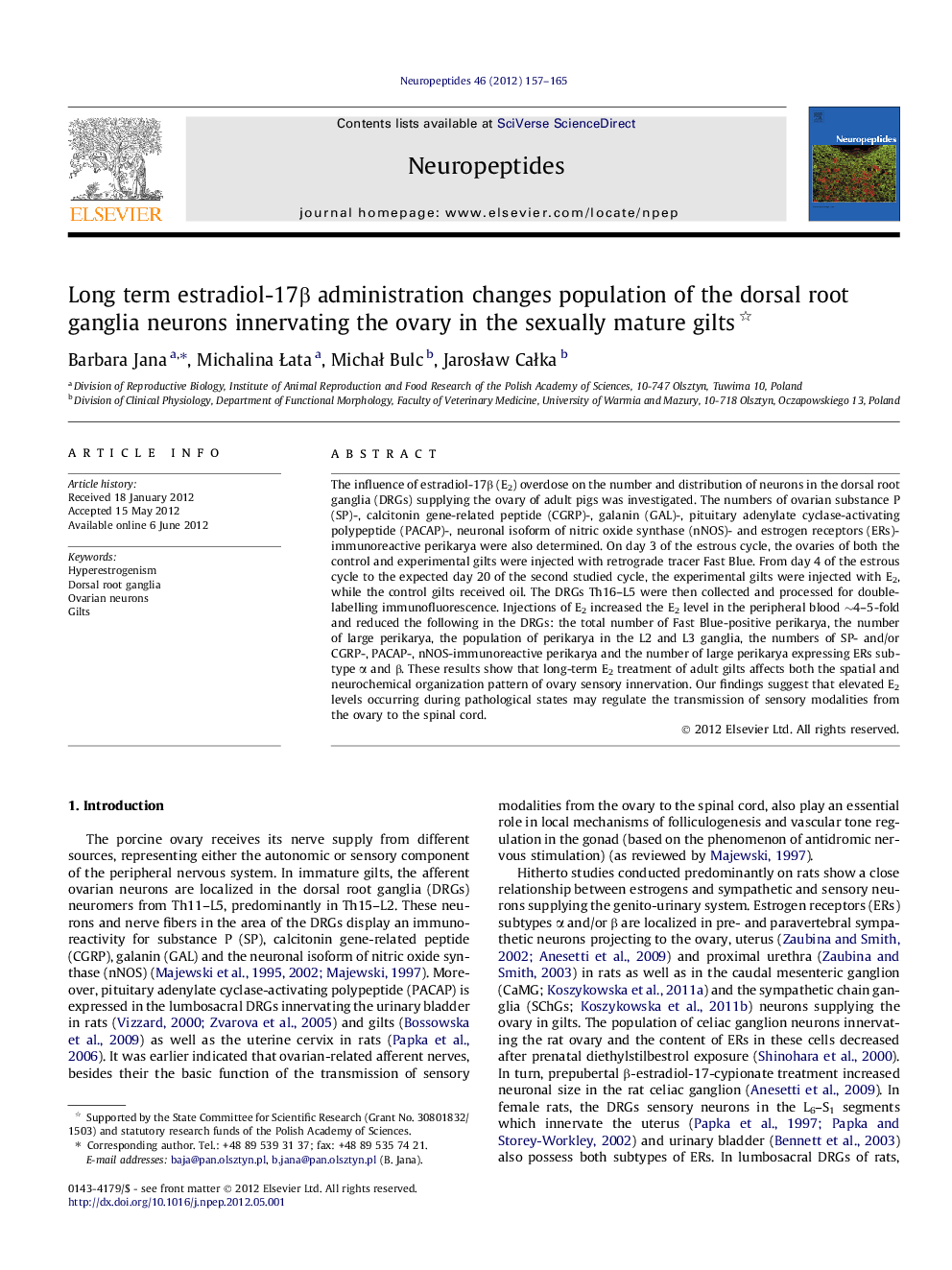| Article ID | Journal | Published Year | Pages | File Type |
|---|---|---|---|---|
| 2808254 | Neuropeptides | 2012 | 9 Pages |
The influence of estradiol-17β (E2) overdose on the number and distribution of neurons in the dorsal root ganglia (DRGs) supplying the ovary of adult pigs was investigated. The numbers of ovarian substance P (SP)-, calcitonin gene-related peptide (CGRP)-, galanin (GAL)-, pituitary adenylate cyclase-activating polypeptide (PACAP)-, neuronal isoform of nitric oxide synthase (nNOS)- and estrogen receptors (ERs)-immunoreactive perikarya were also determined. On day 3 of the estrous cycle, the ovaries of both the control and experimental gilts were injected with retrograde tracer Fast Blue. From day 4 of the estrous cycle to the expected day 20 of the second studied cycle, the experimental gilts were injected with E2, while the control gilts received oil. The DRGs Th16–L5 were then collected and processed for double-labelling immunofluorescence. Injections of E2 increased the E2 level in the peripheral blood ∼4–5-fold and reduced the following in the DRGs: the total number of Fast Blue-positive perikarya, the number of large perikarya, the population of perikarya in the L2 and L3 ganglia, the numbers of SP- and/or CGRP-, PACAP-, nNOS-immunoreactive perikarya and the number of large perikarya expressing ERs subtype α and β. These results show that long-term E2 treatment of adult gilts affects both the spatial and neurochemical organization pattern of ovary sensory innervation. Our findings suggest that elevated E2 levels occurring during pathological states may regulate the transmission of sensory modalities from the ovary to the spinal cord.
